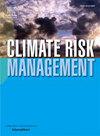城市绿地作为缓解城市热量的自然解决方案的降温效果:来自长达十年的系统回顾的见解
IF 5
2区 环境科学与生态学
Q1 ENVIRONMENTAL SCIENCES
引用次数: 0
摘要
城市绿地(UGS)越来越被认为是有效的基于自然的解决方案(NBS),通过遮阳、蒸散发和增强反照率等冷却机制来缓解城市热量。本系统综述分析了过去十年(2014-2024年)进行的研究,以评估UGS的冷却效益,特别是在炎热和干旱气候下。该研究综合了84篇同行评议文章的研究结果,研究了包括遮阳、蒸散发和空间配置在内的关键机制,同时也解决了实施UGS所面临的障碍。分析了影响降温效果的关键因素,如植被密度、物种选择、空间格局和城市形态。从单个研究中提取的结果表明,UGS可以降低1-7°C的温度,其降温强度受植被类型、空间配置和城市形态的影响。该研究还强调了UGS规划和实施方面的挑战,特别是在炎热和干旱气候中,缺水和城市密度构成了重大制约因素。主要研究结果强调了优化UGS设计以最大限度地提高冷却效益、整合空间连通性、物种多样性和创新水管理系统等策略的重要性。通过解决知识差距和问题,本综述为城市规划者和决策者提供了可操作的见解,以提高城市地质调查局在减少城市热岛效应方面的有效性,并特别关注气候适应和具体情况的战略。本文章由计算机程序翻译,如有差异,请以英文原文为准。
The cooling effect of urban green spaces as nature-based solutions for mitigating urban heat: insights from a decade-long systematic review
Urban green spaces (UGS) are increasingly recognized as effective nature-based solutions (NBS) to mitigate urban heat through cooling mechanisms such as shading, evapotranspiration, and enhanced albedo. This systematic review analyzes research conducted over the past decade (2014–2024) to assess the cooling benefits of UGS, particularly in hot and arid climates. The study synthesizes findings from 84 peer-reviewed articles, examining key mechanisms including shading, evapotranspiration, and spatial configuration, while also addressing the obstacles faced in implementing UGS. It identifies critical factors, such as vegetation density, species selection, spatial patterns, and urban morphology, which influence the cooling effect. Extracted from individual studies, these results highlight that UGS can lower temperatures by 1–7 °C, with cooling intensity influenced by vegetation type, spatial configuration, and urban morphology. The study also highlights challenges in UGS planning and implementation, particularly in hot and arid climates, where water scarcity and urban density pose significant constraints. Key findings emphasize the importance of optimizing UGS design to maximize cooling benefits, integrating strategies such as spatial connectivity, species diversity, and innovative water management systems. By addressing knowledge gaps and issues, this review provides actionable insights for urban planners and policymakers to enhance the effectiveness of UGS in reducing urban heat island (UHI) effects, with a particular focus on climate-adaptive and context-specific strategies.
求助全文
通过发布文献求助,成功后即可免费获取论文全文。
去求助
来源期刊

Climate Risk Management
Earth and Planetary Sciences-Atmospheric Science
CiteScore
8.20
自引率
4.50%
发文量
76
审稿时长
30 weeks
期刊介绍:
Climate Risk Management publishes original scientific contributions, state-of-the-art reviews and reports of practical experience on the use of knowledge and information regarding the consequences of climate variability and climate change in decision and policy making on climate change responses from the near- to long-term.
The concept of climate risk management refers to activities and methods that are used by individuals, organizations, and institutions to facilitate climate-resilient decision-making. Its objective is to promote sustainable development by maximizing the beneficial impacts of climate change responses and minimizing negative impacts across the full spectrum of geographies and sectors that are potentially affected by the changing climate.
 求助内容:
求助内容: 应助结果提醒方式:
应助结果提醒方式:


